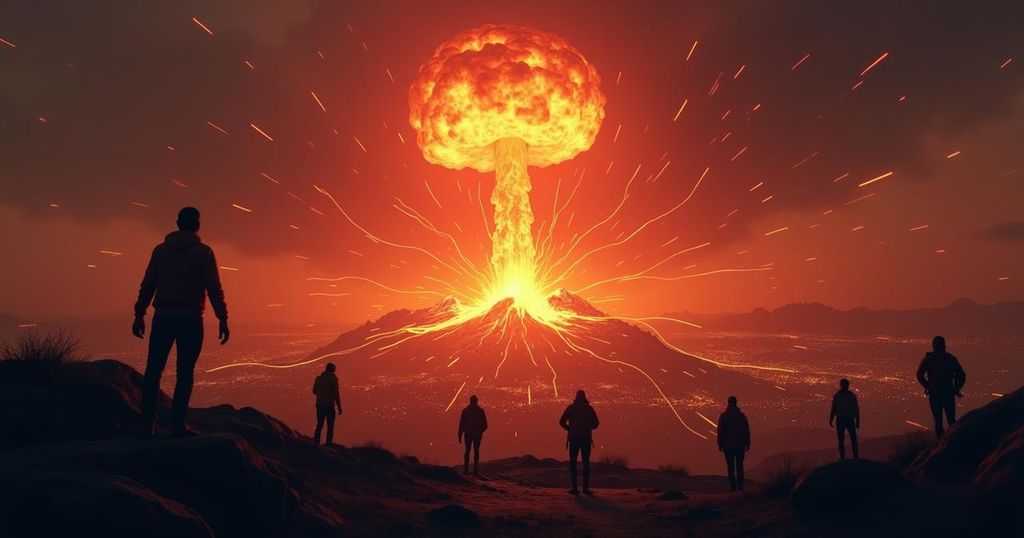Seismic Activity in Iran and Israel Fuels Nuclear Test Speculation Amidst Rising Tensions

A 4.6 magnitude earthquake struck Iran on October 5, prompting unwarranted theories of a nuclear test due to its proximity to nuclear facilities. Simultaneously, Hezbollah’s rocket attacks on Israel have escalated tensions. Experts dismissed nuclear speculations based on the earthquake’s characteristics, emphasizing the need for de-escalation amidst ongoing military actions.
On the evening of October 5, a 4.6 magnitude earthquake was felt in Iran, particularly impacting the region near Semnan, approximately 44 kilometers southwest of the city. The tremors extended to Tehran, located 110 kilometers away, at around 10:45 PM local time. In the aftermath, a weaker tremor was reported in Israel, leading to speculations on social media regarding the cause of the seismic activity. Some believed it could potentially be linked to a nuclear test, due to the proximity of Semnan to Iran’s nuclear facilities. Various users on X (formerly Twitter) articulated their theories. One user claimed that Iran had likely conducted an underground nuclear test, which resulted in the recorded earthquake magnitude. Another remarked on the distress this caused Israel amidst heightened tensions, suggesting that the event underscored Iran’s nuclear capabilities. A third user echoed these sentiments, insinuating that Iran demonstrated precise delivery capabilities for a nuclear warhead prior to the earthquake occurrence. However, experts indicated that the earthquake’s shallow depth and low magnitude should alleviate concerns regarding a possible nuclear test, since containing such an explosion underground without significant surface damage is particularly challenging. These earthquake-related fears came amid escalated hostilities, as Hezbollah launched rocket attacks into Israel, further intensifying the situation. Hezbollah’s acting leader reaffirmed the group’s resolve following significant Israeli military actions. In response, Israel reinforced its military presence in southern Lebanon and reported that they had neutralized several key Hezbollah figures. Amidst this backdrop of violence, Israeli Prime Minister Benjamin Netanyahu characterized Hezbollah as weakened compared to previous years, highlighting recent operations that aimed to diminish its operational capabilities. In light of the ongoing conflict, significant speculation surrounds the leadership succession of Hezbollah following the death of its long-standing leader, Hassan Nasrallah, during an Israeli airstrike in Beirut last month, which adds to the complexity of the region’s geopolitical landscape.
In recent weeks, tensions have escalated significantly in the Middle East, particularly between Israel and Hezbollah. Following a series of confrontations, including rocket attacks by Hezbollah and Israeli airstrikes targeting the group, the region’s stability remains precarious. With Iran’s nuclear program a point of contention, seismic events in the area prompt speculation regarding nuclear activity, adding layers of concern about potential military actions and reactions among neighboring nations. The situation is further complicated by shifting leadership within Hezbollah, following the death of their commander.
In summary, the earthquake that struck Iran and subsequent tremors felt in Israel have sparked conspiracy theories regarding potential nuclear tests, primarily due to the proximity of Iran’s nuclear facilities. Despite these theories gaining traction on social media, experts advocate that the earthquake’s characteristics do not support the notion of a nuclear detonation. Concurrently, the intense military exchanges between Israel and Hezbollah illustrate the fragile state of affairs in the region, marked by ongoing hostilities and leadership transitions within the militant organization.
Original Source: www.mirror.co.uk








